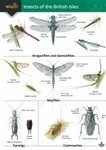![Biology of Blood-Sucking in Insects Biology of Blood-Sucking in Insects]()
Click to have a closer look
About this book
Contents
Customer reviews
Biography
Related titles
About this book
Blood-sucking insects transmit many of the most debilitating diseases to man including malaria, sleeping sickness, filariasis, dengue, typhus and plague. Additionally these insects cause major economic losses in agriculture by direct damage to livestock. This new edition of The Biology of Blood-Sucking in Insects has been fully updated since it was first published in 1991. It provides a unique, topic-led commentary on the biological aspects that are common to blood-sucking insects. This account focuses on the biological adaptations that clearly suit the blood-sucking habit and further discusses host-insect interactions and the transmission of parasites by blood-sucking insects. It also outlines the medical, social and economic impact of blood-sucking insects. The final chapter is designed as a useful quick-reference section.
Contents
Part 1 The importance of blood-sucking insects. Part 2 The evolution of the blood-sucking habit: prolonged close association with vertebrates; morphological pre-adaptation for piercing. Part 3 Feeding preferences of blood-sucking insects: host choice; host choice and species complexes. Part 4 Location of the host: the behavioural framework of host location; appetitive searching; activation and orientation; attraction; movement between hosts. Part 5 Ingestion of the blood meal: vertebrate haemostasis; insect anti-haemostatic factors; probing stimulants; phagostimulants; mouthparts; blood intake. Part 6 Managing the blood meal: midgut anatomy; the blood meal; gonotrophic concordance; nutrition; host hormones in the blood meal; partitioning of resources from the blood meal; autogeny. Part 7 Host - insect interactions: insect distribution on the surface of the host; morphological specializations for life on the host; host immune responses to insect salivary secretions; behavioural defences of the host; density dependent effects on feeding success. Part 8 Transmission of parasites by blood-sucking insects: transmission routes; specificity in vector-parasite relationships; origin of vector parasite relationships.
Customer Reviews
Biography
Mike Lehane is Professor of Medical Entomology in the Liverpool School of Tropical Medicine.




































